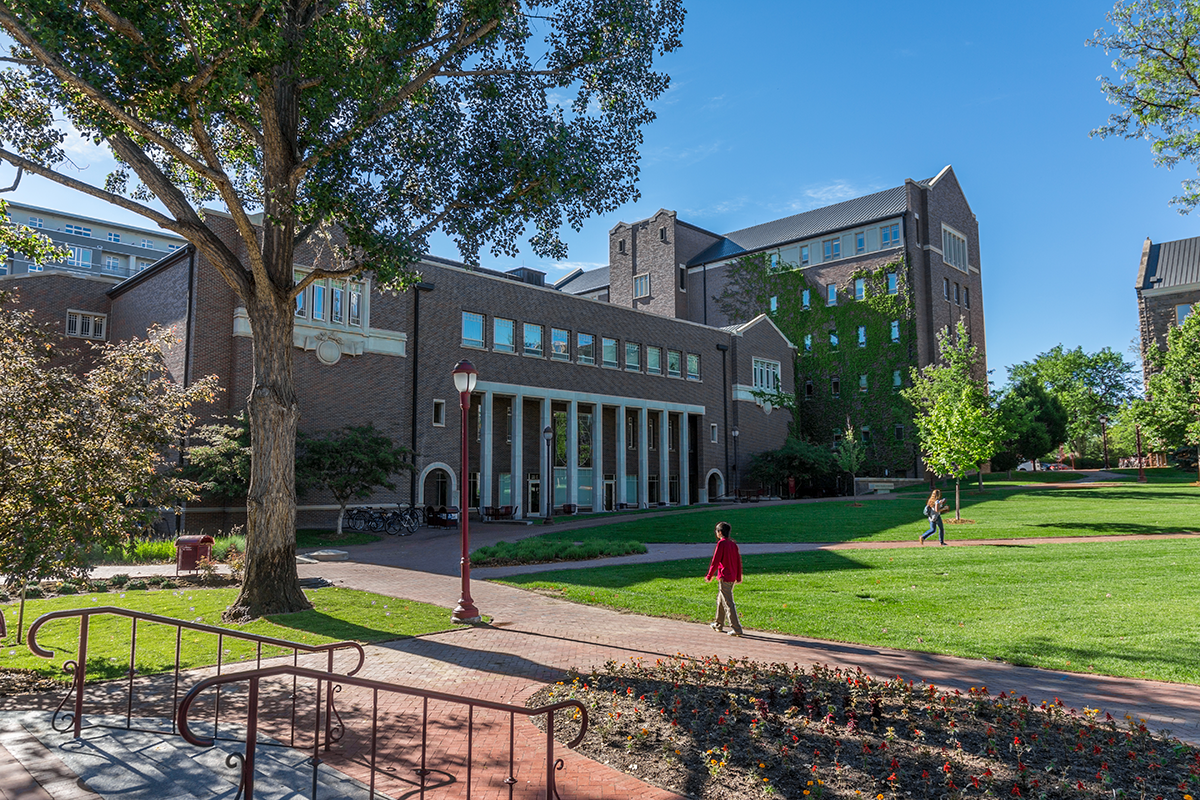Marketing Meets Science in Grad Student-Researcher Collaboration
Students in the Professional MBA program get real-world experience helping a Ritchie School professor market his social robot.
Students in the Daniels College of Business are no strangers to using case studies to learn, but Michael Myers, associate teaching professor and academic director of the MBA program, decided to take it a step further: Why not give students the chance to collaborate with DU researchers on marketing real-world products created right here on campus?
For two students in the Professional Master of Business Administration (PMBA) program, that led to working with Mohammad Mahoor, professor of electrical and computer engineering in the Ritchie School of Engineering and Computer Science, to help him market a robot he developed to benefit children with autism spectrum disorders.
Much of Mahoor’s research focuses on computer vision, machine learning and algorithm development with the goal of developing social robots—automatons that can socially interact with humans, potentially offering a wide range of beneficial uses. Previously, Mahoor and his fellow researchers developed Ryan, a companion robot designed to assist patients with Alzheimer’s.
When Myers partnered with Mahoor to bring the project into his classroom, it drew the attention of Jacquelin Lalor, who has a background in school nursing, and Ashley Hill, assistant director of Equity Labs at DU. Both were immediately interested, says Lalor. “I think it was a perfect fit. It touched on some things that were important to us.”
The two were tasked with developing a marketing plan and began by researching the existing market, potential demand and competing products, among numerous other factors. “Then, we did a lot of research around the audience—who uses the product that you're developing the marketing plan for? The user drives a majority of the way that the rest of the plan is set up,” says Hill. With a thorough understanding of the market, the product and the audience, they developed and presented a go-to-market plan in the spring quarter.
The opportunity to do real, meaningful work with researchers across the disciplines made the project even more impactful, Lalor says. “The integration and collaboration between different segments in the university was really exciting as an MBA student,” she says. “We do a lot of case studies, but this is personal. We met these people; we know what their work is—that's very different than reading and responding to a case study.” And for Hill, balancing the needs of a multi-faceted audience and user base was both interesting and challenging. Compared to other coursework, she says, “this was very multi-dimensional in a lot of different ways.”
Beyond gaining practical skills and real-world experience, Hill adds, collaborating with faculty whose research is focused on the public good was rewarding. “They want to help people and do research that is meaningful, important and generative. They’re looking for a better future. It was really refreshing and inspiring for me to be in conversation with this internal team and with Dr. Mahoor’s folks and to know that that alignment is out there,” she says.
For Myers, the project was part of a push to provide students opportunities to work with intellectual property, gaining valuable, real-world skills and knowledge, which he says is crucial for preparing students for their careers. “In the business school, we fight to bring reality in—because abstraction doesn't help,” he says. “That's what this type of project brings to students.”
Myers hopes to continue providing his students with these types of experiences. “The buffet is open. We would like [faculty] to come and bring projects in—and we will help you execute,” he says. “If you have a need, I've got a small army of brilliant students who will do great work.”











